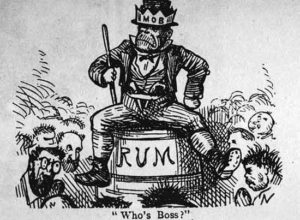
Having an authentic “Irishness” implies that there is a pure core element to the culture which is simply not true. The concept of Irish identity and culture is constantly changing, therefore making it impossible to establish one true definition of Irish identity. Another obstacle that stands in the way of establishing an explanation for what it means to be truly Irish is the rigidity of the rules set in place. At most, a person could only have a sense or feeling of Irish identity, but not have a true grasp on it.
Authenticity played a large role in Irish American gang life. The formation of gangs in the United States was greatly based off culture and ethnic background. Those who were not of Irish descent were not allowed to be involved in the Irish gang life. The selectivity was based on heritage because people identified more with those of the same culture. They were able to connect with each other on a deeper level because of the shared customs, traditions, and values.
Irish-American gangs also formed due to the treatment of the Irish immigrants by the Americans. Like the Irish, the Americans also had a sense of pure “Americanness” which also had requirements, to be born in America. With this “pure” American identity, the Irish, along with other immigrant groups, were viewed as “the other” and therefore not truly American. The pure link that each group felt led to a struggle in the power dynamic between the two. This posed the question, which was more powerful? Who truly controlled the streets of New York? Rivalries between the Irish and the Americans grew intense and resulted in dozens of brawls and murders.
The authenticity of the culture was very important to the Irish-Americans because it was important in their home country. Memories of their previous lives and the longing for the old Ireland led to the search for an authentic Irish culture ; but the truth is that this “true” Irish culture does not really exist. Instead, the essence of Ireland is found in sublime objects and landscape. The feeling of “the essence of Ireland” is fleeting and can never be grasped entirely. Perhaps that played a part in the dismantling of these organizations.
Despite its dynamic nature, there are some key elements of Irish culture that emulate what it means to be truly Irish. Some of these core ideas include Catholicism, and the patriarchy. Although these elements were more relevant during the late 19th and early 20th century they are less important to Irish culture today due to social changes in society.


